When it comes to repairing significantly small but important machine parts, usually two welding methods come into mind: laser welding and micro TIG welding, also known as pulsed micro TIG.
While welders and promoters claim that one or the other technique is superior, both show certain advantages and weaknesses.
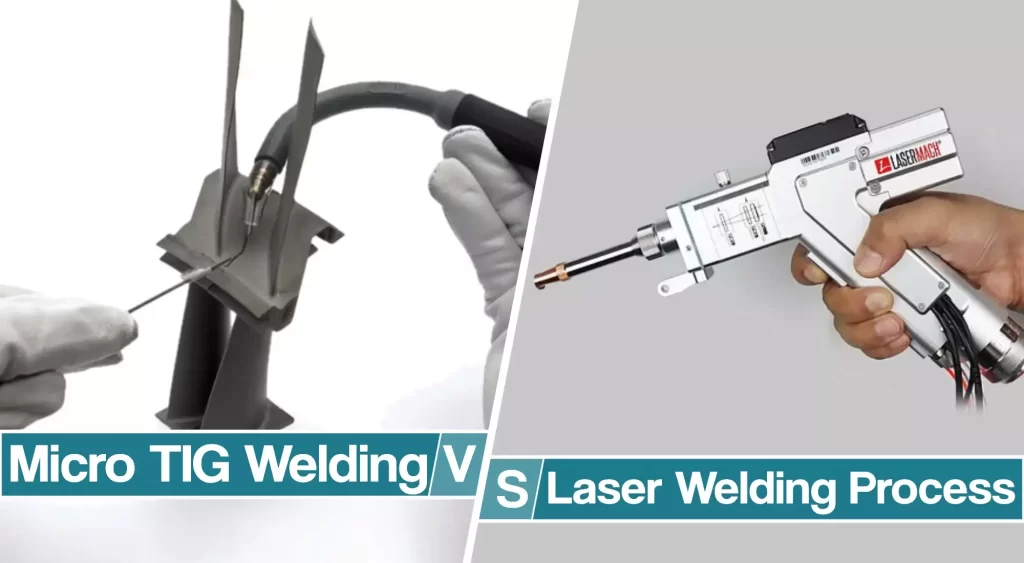
However, one thing is certain, both laser and micro-welding processes are improvements to traditional TIG tool welding. So, let’s see the differences between laser welding vs. micro TIG welding.
Micro TIG Welding Process Overview
Micro welding has evolved from traditional TIG welding. This arc welding process involves a non-consumable tungsten electrode that produces heat, the same as traditional TIG. Heat at the point of the arc gap forms a molten pool, and the heated base metal can either fuse or welders can use the filler rod.
The difference between traditional TIG and micro-welding is that micro TIG welding is done at extremely low amperage, usually less than 10 amps. In addition, pulse control of the amperage and the aid of a high-powered microscope allow welding of extremely thin materials up to 0.0002 square inches thick.
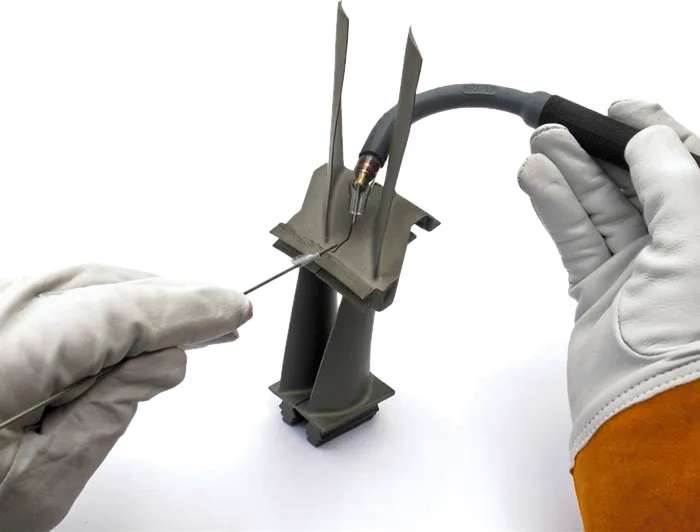
Since micro TIG welding is considered a non-contact process that utilizes heat on the surface to join metal, the best results come from merging the same metal grades. Nonetheless, this process can be used to join dissimilar metals.
The most common weldable materials are aluminum, copper, phosphor bronze, iron, nickel, stainless steel, molybdenum, tungsten, platinum, and titanium.
Pros and Cons of Micro TIG welding
Pros
- Minimal HeatAffected Zone
- Controlled small deposits of 0.005 inches and as little as 0.002 inches
- Minimizes warp, stress, and fatigue on the metal
- A high-Powered Microscope allows the welder to achieve small and intricate weld deposits
- Higher penetration compared to laser welding
- Can reach difficult areas
- Durable and discrete welds
- Lower cost than remaking the damaged part
- Faster and less expensive than LW
Cons
- Extremely high skill of the operator is required
- Requires TIG welding machines with low amp start options, pulse, and balance controls
- Laser welding is capable of handling much larger buildups
- Certain metals can be difficult to weld
Laser welding process (LW or LWB) Overview
The laser welding (LW) or laser beam welding (LWB) process uses a highly concentrated beam of light beam energy to form a weld and join metals or thermoplastics. As a powerful and focused laser beam is used, the electrons in the area get excited to a point where the material melts due to the atoms breaking the bonds.
The light energy intensity of the laser welding is controlled by beam size, voltage, and pulse width, singularly or repeated at variably timed intervals. Therefore, once welding process parameters are set, welders get consistent results.
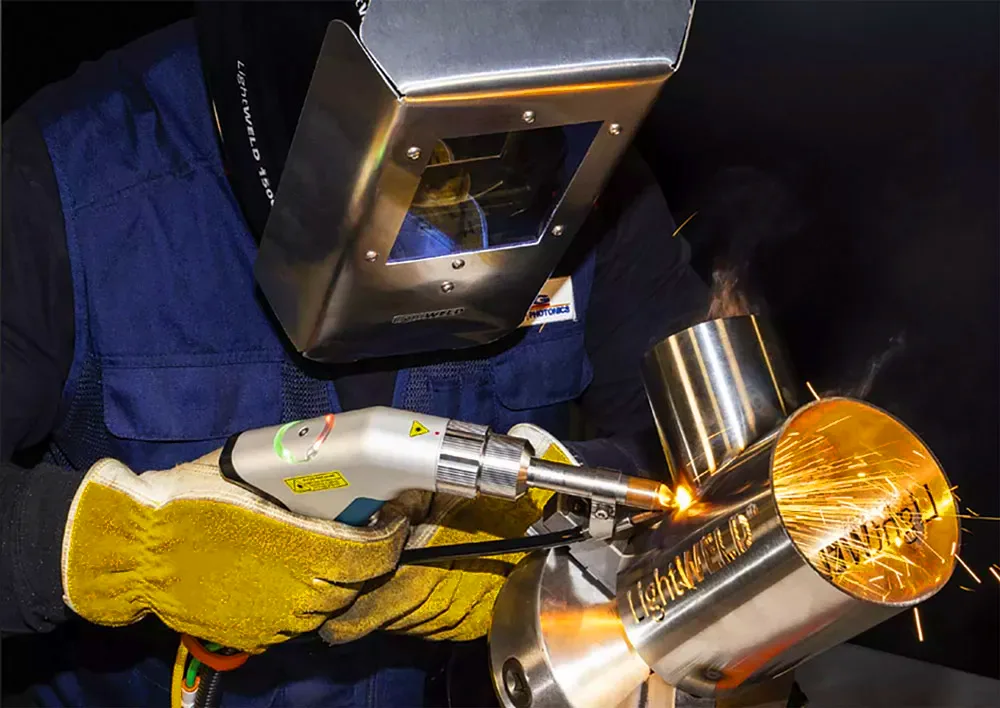
The laser process generates no heat in the workpiece by electrical current flow or resistance to flow in laser weld. Thus, heat input is limited, and the heat-affected zone is significantly smaller.
Laser welding has found its way into many industries and applications due to its excellent precision and low heat that allows it to work with thinner materials.
Laser welding is capable of welding stainless steel, low carbon steel, nickel-based alloys, or difficult-to-weld materials such as titanium (refractory alloys), 3-D grown materials, cobalt, chromoly, and Inconel. However, welders might find it challenging to join Brass Cadmium, Zinc, Medium-high carbon steels, Cobalt alloys, copper & copper alloys, Tungsten, Cast iron, Tool steels, Aluminum, Magnets
Pros and Cons of Laser Beam Welding
Pros
- Lasers provide high-quality weld seams
- Laser pulses with continuous-wave that creates a very narrow heat-affected zone
- Laser welding provides lower heat compared to traditional MIG welding
- The process can be easily automated
- You can use it to weld even the most minor parts
- Laser welding can be used to join various materials and different material thicknesses
- Lasers are easy to maintain, and you don’t have to buy consumables such as TIG welding fillers or MIG filler wire
Cons
- Laser welding equipment and machines are costly
- Today’s lasers used in hybrid welding are capable of joining a maximum of 25 mm thick materials
- Lasers usually utilize only less than 10% of energy
Laser welding vs. Micro TIG Welding – Head-to-Head Comparison of Crucial Aspects
After a brief overview of laser welding and micro-welding, let’s now compare essential aspects of both welding processes. In this section, we will discuss the penetration and durability of the welds, weld strength, consistency, weld sizes, ease of use, and cost.
As no welding process is perfect, understanding these properties we mentioned will help you choose the ideal method for your job. However, if you combine laser welding and micro-welding processes, you can get the benefits of both, but money-wise it might be a challenging investment.
Weld Strength and Penetration Of Laser Welding vs Micro TIG
One of the most significant advantages of Laser welding is the limited heat input. You can even touch laser-welded metal pieces with so little heat without burning your hands, and there is no fear of distortion of the surrounding material. However, some consider laser power offers less penetration and weaker welds.
On the other hand, the welding arc created in the micro-TIG process digs deeper into the base material, which is essential for filling holes and large damaged areas.
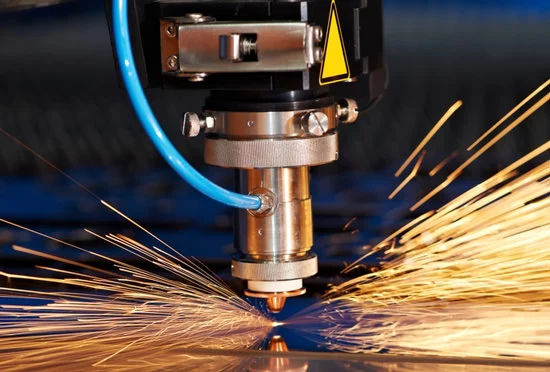
Don’t get me wrong, you can achieve great results with laser welding, but you will need to set the pulse width and power density and adjust filler choices.
Weld Consistency and Weld Cleanliness
Laser welding enables the quality and consistency of welding to be readily controlled and consistently maintained. Since the laser head doesn’t directly contact the workpiece and no electrode can become worn, eroded, or damaged, there is no need for a tool change. In addition, Micro TIG welding means the electrode needs to be reground or sharpened, as is the case with TIG.
Once you set up your welding parameters, your laser weld will be exactly the same with the same material. Thus, you get consistent laser welds that cannot be contaminated by excess dirt or operator mistakes. That’s why lasers are often used to build medical devices.
Welders often choose TIG welding since it is one of the cleanest processes, and the laser process can pretty much follow. However, there are differences when it comes to preparation.
Anything that will be laser-welded must be critically clean. Any rough areas, such as rugged steel, burrs, and the sharp area, will cause problems if not cleaned prior to welding. On the other hand, Micro-TIG welding creates a larger weld puddle, burning down problem areas.
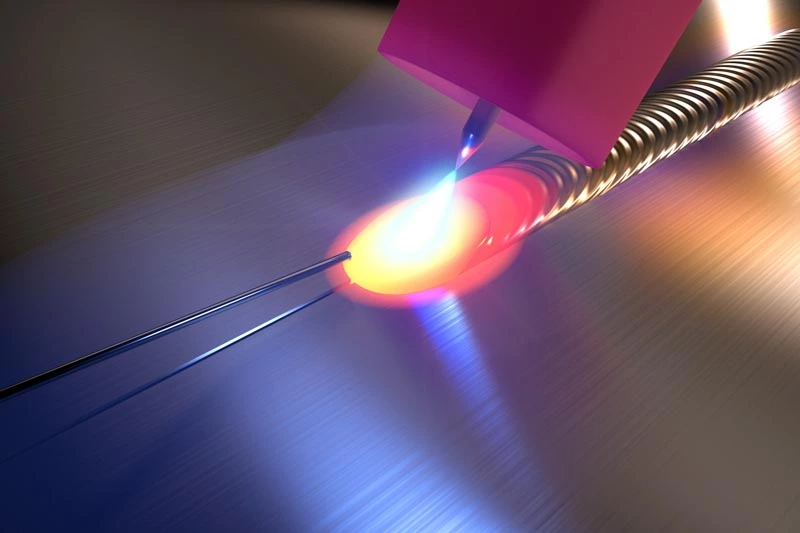
So laser welding doesn’t contaminate electrodes or depend on filler material, but it requires a thorough cleaning of the weld areas.
Metal Thickness Limits For Laser Beam Welding
Laser welding is commonly used for minor repairs such as weld buildups of 0.005 to 0.010 inches on molds and inserts. Meanwhile, in this particular situation, the heat output of a micro-TIG process could cause damage.
Laser welding often needs a “smoothing” pass when the welding is in a multiple-pass approach.
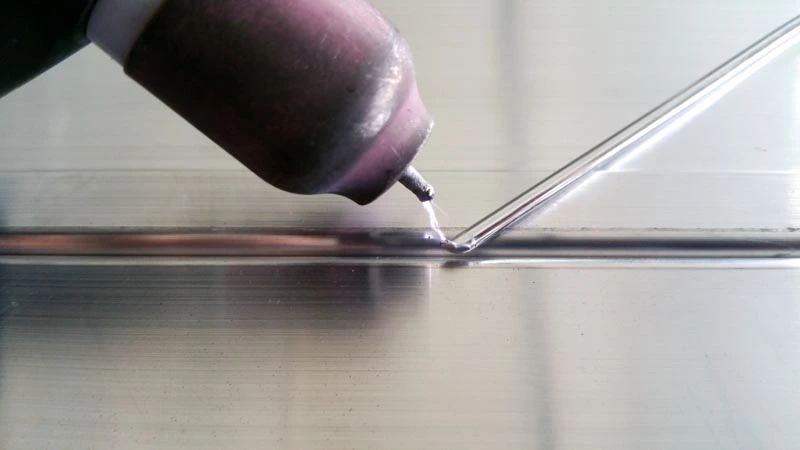
The welder welds over a previously laser-welded area without adding a rod to break any porosity. In addition, each laser weld layer needs a smoothing pass before adding more rods. Minor repairs using the laser process with aluminum have shown superior results when compared to TIG.
Ease of use
TIG welding is renowned as one of the most challenging welding processes to master, and with micro-welding, it only gets more complicated. On the other hand, welders can master laser welding operation much easier, as it is significantly more forgiving.
On the other hand, setting up the laser for certain welding applications when the job is done in awkward positions can take some time. Therefore, some welders say it took them 30 minutes to align the laser, then a minute to make a weld.
Cost
Laser welding equipment and machines are costly, so the initial investment is significantly higher compared to the traditional methods such as spot welding. In addition, lasers usually utilize less than 10% of energy, signifying low energy conversion efficiency.
On the other hand, Micro TIG welding equipment is cheaper, but you should make sure it can output low amps, with fine pulsed micro TIG options.
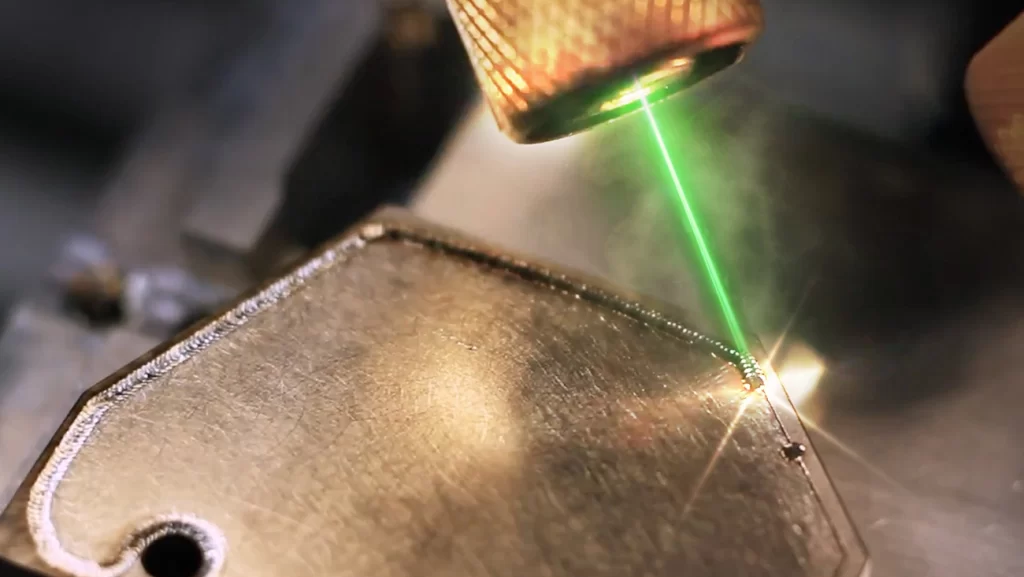
In processes where throughput is high, it is common to find that the laser solution is more efficient and results in a lower cost per foot of weld. Interestingly, some processes combine laser and arc welding to achieve deeper penetration and higher welding speeds. These hybrid processes typically use laser welding to join the metal efficiently.
Final Thoughts
Another consideration is using the strengths of both processes on a repair in different steps as both the laser and micro weld processes have positive and negative issues.
Regardless of the good and the bad, both laser and micro-welding processes are improvements to traditional TIG tool welding, and both processes have definite benefits and expanded opportunities for applications.
Resources:
- https://www.moldmakingtechnology.com/amp/articles/laser-welding-versus-micro-welding
- https://microtechwelding.com/lbw-or-gtaw
- https://info.laserstar.net/blog/the-advantages-of-laser-welding-over-traditional-welding-methods?hs_amp=true
- https://www.moldmakingtechnology.com/articles/under-the-scope-a-case-for-micro-tig-welding
- https://cyan-tec.com/laser-systems/how-is-laser-welding-better-than-tig





